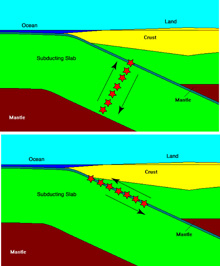Seismologists at Washington University in St. Louis and their colleagues in Australia, Japan and Tonga have determined why a large earthquake in Tonga did not cause a large tsunami. A tsunami warning was issued around the Pacific Rim following the magnitude 8.0 earthquake on May 3, 2006, but the resulting tsunami was very minor and caused no damage.

Tsunamis generally result from shallow-thrust earthquakes, which occur when the seafloor is pushed downward beneath the land in places like Japan, Chile, Indonesia and Mexico. The researchers found instead that this earthquake was slab-tearing event — a rupturing of the down-going seafloor beneath Tonga. This explains why the tsunami was smaller than expected, and suggests that large earthquakes in Tonga may typically be of the slab-tearing variety, consistent with the lack of large historical tsunamis in Tonga.
Douglas A. Wiens, Ph.D., Washington University professor of earth and planetary sciences in Arts & Sciences, and his collaborators quickly assembled their equipment and deployed seven stations to record the aftershocks some 60 kilometers beneath the surface. Washington University technical scientist Patrick Shore and graduate student David Heeszel, along with Australian and Tongan co-workers, installed the seismographs. Shore and Heeszel sailed on a small ship for several days to deploy the seismographs on a group of islands near Ha’apai, Tonga.
“A shallow-thrust earthquake’s main shock would have been shallower than what we found,” Wiens said. “Because that part of the world does not want a repeat of the Sumatra experience, we wanted to determine the nature of the earthquake. Our Washington University group has done extensive analyses of Tongan earthquakes, so other researchers and the National Science Foundation got in touch quickly and we had equipment installed in early June.”
“The Sumatra earthquake surprised a lot of people, and the size of the Tongan one also surprised us, so we wanted to make sure there was not a tsunami hazard in the region. If all the large earthquakes are of the slab-tearing variety like the May 2006 event, it doesn’t appear that there is one.”
Heeszel and Wiens presented their results at the Winter Meeting of the American Geophysical Union, held Dec. 10-15, 2006 in San Francisco. The research is sponsored by the National Science Foundation.